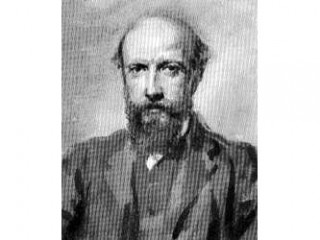
Philip Webb biography
Date of birth : 1831-01-12
Date of death : 1915-04-17
Birthplace : Oxford, England
Nationality : English
Category : Arhitecture and Engineering
Last modified : 2012-01-23
Credited as : architect, designer of Red House at Bexleyheath, called the Father of Arts and Crafts Architecture
0 votes so far
Born in Oxford, Webb studied at Aynho in Northamptonshire and was then articled to firms of builder-architects in Wolverhampton and Reading, Berkshire. He then moved to London where he eventually became a junior assistant for G. E. Street. While there he met William Morris in 1856 and then started his own practice in 1858.
He is particularly noted as the designer of Red House at Bexleyheath, southeast London in 1859 for William Morris, and — towards the end of his career — the house Standen (near East Grinstead in West Sussex). These were among several works in his favoured niche: country houses.
William Morris, Edward Burne-Jones and Dante Gabriel Rossetti were three of his fellow partners in the interior decorating and furnishing business, Morris, Marshall, Faulkner & Co., later to become Morris & Co.
Webb and Morris formed an important part of the Arts and Crafts movement, and founded the Society for the Protection of Ancient Buildings in 1877. Webb also joined Morris's revolutionary Socialist League, becoming its treasurer.
George Howard of Naworth Castle near Brampton in Cumbria was an able artist and friend of the Pre-Raphaelites, and a keen patron of Philip Webb. Webb had built two houses for his Naworth Castle Estate: Four Gables and Green Lane House, as well as his London house at 1, Palace Green. Much financial help was offered towards building a new church in Brampton by Charles Howard MP (George Howard's father) on condition that he chose the architect.
Webb's plan for St Martin's Church is quite unlike most other Victorian churches, with the body of the church being almost square. It is the only church designed by Webb, and contains an exquisite set of stained glass windows designed by Burne-Jones, and executed in the William Morris studio.
His friendship with the family of Sir Thomas Hugh Bell, leading ironfounder of Middlesbrough, led to three commissions - of Rounton Grange (demolished in 1953), Red Barns House and the Dorman Long office building (originally Bell Brothers Ltd) in Middlesbrough (his only commercial development).
In 1901 Philip Webb retired to the country and ceased practising. He continued to be an influence on the "school of rational builders" surrounding William Lethaby, and Ernest Gimson and his community of architect-craftsmen based at Sapperton in Gloucestershire.
















